 Oceanic Submersibles: Pietro Calvi, Giuseppe Finzi, Enrico Tazzoli (1936-43)
Oceanic Submersibles: Pietro Calvi, Giuseppe Finzi, Enrico Tazzoli (1936-43)WW2 Italian Submarines
Balilla class (1927) | Ettore Fieramosca (1929) | Archimede class (1933) | Glauco class (1935) | Pietro Micca (1935) | Calvi class (1935) | Foca class (1937) | Marcello class (1938) | Brin class (1939) | Liuzzi class (1939) | Marconi class (1940) | Cagni class (1940) | Romolo class (1943)Mameli class (1926) | Pisani class (1928) | Bandiera class (1929) | Squalo class (1930) | Bragadin class (1929) | Settembrini class (1930) | Argonauta class (1931) | Sirena class (1933) | Argo class (1936) | Perla class (1936) | Adua class (1936) | Acciaio class (1941) | Flutto class (1942)
CM class (1943) | CC class (Laid down) | CA class (1942) | CB class (1942)
 The Calvi class were essentially a modern reboot of the 1920s Balilla class, as three Oceanic Submersibles built in 1935-36 at Oderno-Terni-Orlando in Genoa. In the Mediterranean in the summer of 1940, they were transferred in August to the BETASOM Atlantic submarine base at Bordeaux to help Hitler’s operations in the Atlantic under semi-independent command. In December 1941 she famously carried out a rescue mission to carry the 254 sailors of the sunken auxiliary cruiser Atlantis. They sank in common around 160,000t of allied ships (29). Calvi was rammed and sunk on 14 July 1942 by convoy escort HMS Lulworth. Finzi and Tazzoli were later converted as transport submarines to run to Japan and back with rare or irreplaceable trade goods having reduced reserve buoyancy and armament. Finzi ended in German service as UIT21 and was scuttled in France on 25 August 1944 (Op. Dragoon), whereas Tazzoli was sunk on 23 May 1943 by aircraft in the Bay of Biscay. She had been however the best sub of the Italian Navy and captain Fecia di Cossato an ace with 18 kills. #ww2 #regiamarina #calvi #submarine #sottomarino #italiannavy
The Calvi class were essentially a modern reboot of the 1920s Balilla class, as three Oceanic Submersibles built in 1935-36 at Oderno-Terni-Orlando in Genoa. In the Mediterranean in the summer of 1940, they were transferred in August to the BETASOM Atlantic submarine base at Bordeaux to help Hitler’s operations in the Atlantic under semi-independent command. In December 1941 she famously carried out a rescue mission to carry the 254 sailors of the sunken auxiliary cruiser Atlantis. They sank in common around 160,000t of allied ships (29). Calvi was rammed and sunk on 14 July 1942 by convoy escort HMS Lulworth. Finzi and Tazzoli were later converted as transport submarines to run to Japan and back with rare or irreplaceable trade goods having reduced reserve buoyancy and armament. Finzi ended in German service as UIT21 and was scuttled in France on 25 August 1944 (Op. Dragoon), whereas Tazzoli was sunk on 23 May 1943 by aircraft in the Bay of Biscay. She had been however the best sub of the Italian Navy and captain Fecia di Cossato an ace with 18 kills. #ww2 #regiamarina #calvi #submarine #sottomarino #italiannavy
Design of the class
The Calvi class were ocean-going submarines of the Regia Marina derived from the Balilla class, and built in three boats, entering service in 1935.
They belonged to the “total double hull” type, equipped with considerable autonomy but with poor manoeuvrability making them suitable only for attacking merchant ships isolated in oceanic waters, but unsuitable for convoys attacks. Still they were considered better boats than the Balilla, but no more would be built due to high construction costs. Some extra developments were planned such as a «21 knot Calvi» and the «Galezzi structure Calvi», remaining on paper. Later the Ammiragli class of WW2 are considered a straight line development.
The class namesake was Pietro Fortunato Calvi: (1817-1855), a patriot and hero of Risorgimento, born in the Lombardy-Veneto, fighting against the Austrians, captured, accused of treason and executed.
Construction started in 1932-33. They were launched in 1935 at OTO Muggiano. Calvi was completed late 1935 and her sisters in 1936. They were essentially known as slightly improved Balilla with increased beam and better hull form, lower CT and sail for better stability overall. However, they were limited in their machinery space and underpowered, only capable of 16.8 knots at best surfaced. This was a lower designed speed but actual speed was slightly higher than in the earlier ships with also 4.7kts underwater, although this was still below the required figure.
The space and weight gained provided for the addition of 2 torpedo tubes, a second 120mm gun, and a substantial increase in fuel stowage, giving them an endurance of 13,400 nautical miles (24,800 km) at 8kts (15 kph) without the need of an auxiliary diesel as in Balilla. Endurance submerged was 80 nautical miles (150 km) at 4 knots (7 kph) and a diving limit of 330ft (100 m). The torpedoes carried gave one reload for each tube.
Calvi was scuttled in the Atlantic after being heavily damaged by Lulworth and other British escorts. In 1943 the remaining pair were converted to carry supplies to and from Japan but Tazzoli was lost in the Bay of Biscay on her first trip out from causes unknown. Finzi was seized by the Germans in September 1943 and taken into their service as UJT21; she was employed as an operational unit in the North Atlantic and scuttled at Bordeaux.
Hull and general design

The Calvi class displaced 1,549 metric tons (1,525 long tons) surfaced, 2,061 metric tons (2,028 long tons) submerged. The hull measured 84.3 meters (276 ft 7 in) long overall for a beam of 7.7 meters (25 ft 3 in) and draft of 5.2 meters (17 ft 1 in). To compare, the Balilla were 86.5 x 7.8 x 4.7m (283 ft 10 in x 25 ft 7 in x 15 ft 5 in). The hull was strong enough for them to dive operationally at 90 meters (300 ft) with a max safety depth of 100 m (330 ft), probable crush depth beyond 130-150m (500 ft). For their large size they carried 77 officers and enlisted men, like the Balilla. The general hull design was about the same, albeit improved in shape to achieve greater speeds, but the conning tower was longer and lower at the same time, with an enclosed helm forward, a CT with two main navigation and battle periscopes, and a large aft deck, uncovered (canvas only) to install two twin 13.2 mm Breda HMGs.
However, late in their career this large sail was cut down entirely in 1941, leaving just the forward section and a short aft AA deck, more in line with German designs. This was notably to regain stability and allow them to dive quicker.

A profile of Tazzoli as transport in 1943
When converted later as transport submarines, they were further modified, with a gun removed as well as their torpedoes. Space was found wherever possible and the crew was reduced to the operating minimum.
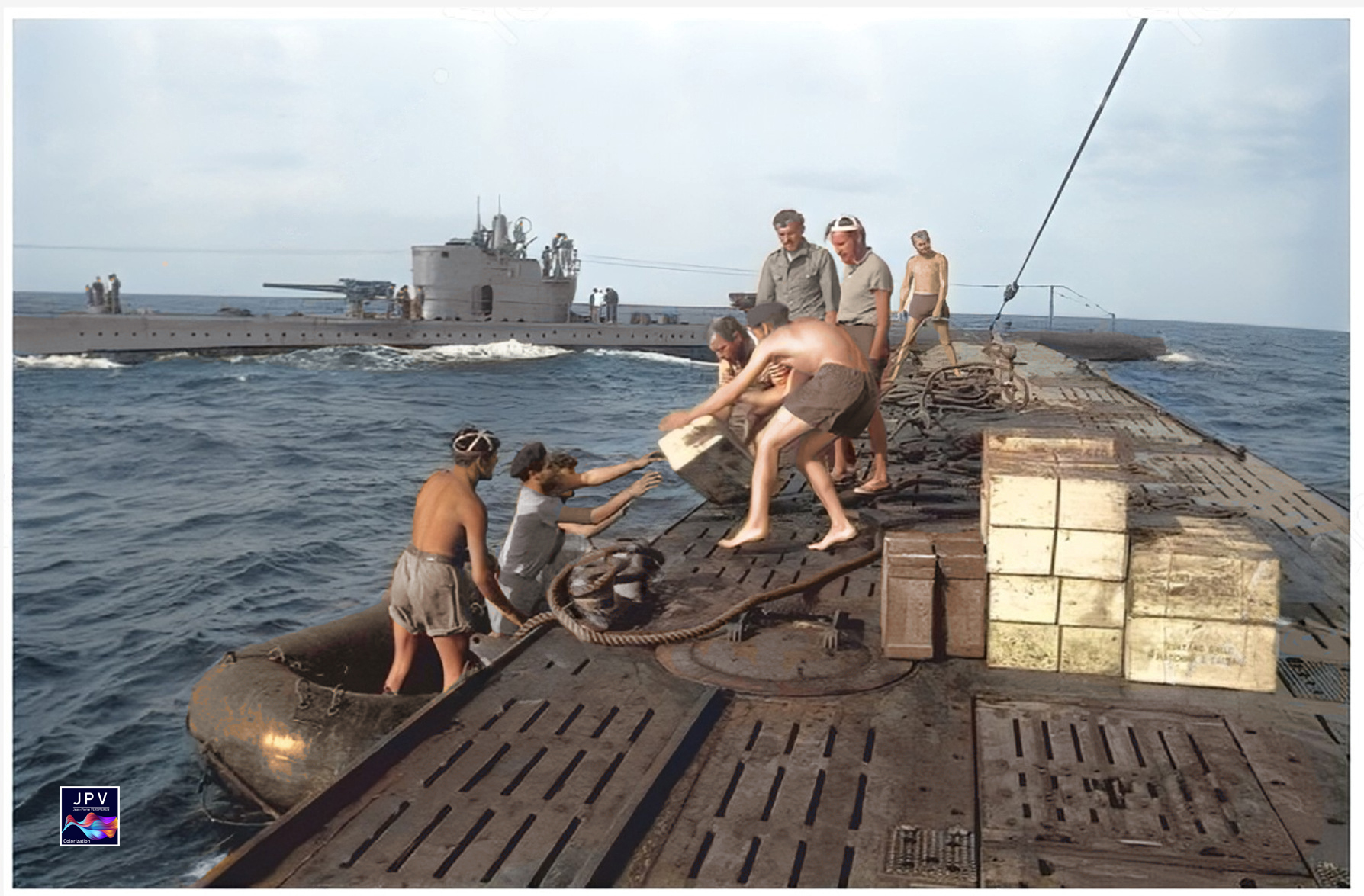
Meeting of Kad-Friedrich Merten’s U-68 and an Italian submarine of the Calvi class, which takes the opportunity to provide its German colleague with supplies.
ECPAD/German Fund colorized src facebook by Ed Tambunan, Das U-Boote in Farbe src orig. Note the conning tower was made shorter while they served at BETASOM.
Powerplant
When surfaced, these subs had a two 2,200-brake-horsepower (1,641 kW) FIAT diesel engines each driving a 3-bladed propeller shaft each. Total was 4400 hp. Submerged, the shafts were clutched to a pair of San Giorgio electric motors rated for 900-horsepower (671 kW), for a total of 1800 hp. Surface speed at best on trials was 16.8 knots (31.1 km/h; 19.3 mph) surfaced, and 7.4 knots (13.7 km/h; 8.5 mph) while submerged. Surface range was equal or superior to 11,400 nautical miles (21,100 km; 13,100 mi) at 8 knots (15 km/h; 9.2 mph) and down to 120 nautical miles (220 km; 140 mi) submerged at 3 knots (5.6 km/h; 3.5 mph), or 80 nm at 4 knots. They carried 249 tonnes of diesel oil. The model and number of Battery units is unknown (yet).
Armament
The Calvi class had eight 53.3-centimeter (21 in) torpedo tubes: Four in the bow, four in the stern, all reloadable from the pressure hull, with a reload for each, so a grand total of 16 torpedoes. Unlike the Balilla class, what was gained in extra stability enabled the installation of a second 120-millimeter (4.7 in) deck guns aft, in order to perform more surfaced attacks on lower value targets. They were fore and aft of the conning tower, but when the latter was cut down, the aft main gun gave the appearance of being far from the CT. The anti-aircraft armament consisted at the start of two twin mounts for 13.2-millimeter (0.52 in) machine guns on the platform aft of the CT. Later this was reduced to just one.
They also differed in armament. Calvi and Finzi had two 120mm/45 OTO 1931, two twin 13.2mm/76, and eight 533mm TTs whereas Tazzoli could carry and lay 14 mines.
Main: 120mm/45 OTO Modello 1931
It weighed 3.2 tons, with a barrel elevation of -4° to 32° or 35° on later models. It fired a 22 kg (48.5 lbs.) unitary HE shell or 23.15 kgs (51 lbs.) AP rounds, which initial muzzle velocity was 730 m/s, range 14,000–14,500 meters at maximum elevation. Its rate of fire was 8 rounds/minute. It used a horizontal sliding block and was common to the Balilla, Fieramosca, Micca and Calvi Classes, so large oceanic submarines.
The 120 mm/45 (4.7″) Model 1931 was a low-powered gun used only on submarines with horizontal sliding block.
The Gun Weight was 3.2 tons (3,484 kg), with a bore length of 212.6 in (5.400 m). Rate of fire was 8 rounds per minute. It fired either an HE 48.5 lbs. (22 kg) shell or an AP 51 lbs. (23.15 kg) at a muzzle Velocity of 2,395 fps (730 mps), with an elevation of -4/+35 degrees giving a range of 15,860 yards (14,500 m).
AA: 2×2 Breda Modello 31
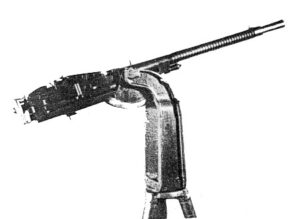
The anti-aircraft defence counted on two twin Breda M1931 13.2 mm L/76 heavy machine guns, placed on a rear platform of the conning tower. Each mount weighed 695 kg, but ensured an elevation of -10° to 90°. They fired 125 g unitary rounds, with a muzzle velocity of 790 m/s, maximum range of 6,000 meters and effective range of 2,000 meters. Their rate of fire was 500 rounds/min, so 2000 rounds when both twin mounts fired in concert, however.
16x 533 mm torpedoes
Model unknown. When completed it had models powered by wet-heaters:
-W 270/533.4 x 7.2 Veloce: 1,700 kg, 7.2 m WH 270 kg, 3,000-4,000 m/50 knots or 12,000 m/30 knots.
-W 270/533.4 x 7.2 “F”: 1,550 kg, 6.500 m, WH 250 kg, speed 3,000 m/43 knots or 10,000 m/28 knots
-W 250/533.4 x 6.5: 1,550 kg, 7.200 m, WH 270 kg, 4,000 m/48 knots or 12,000 m/30 knots.
-Si 270/533.4 x 7.2 “I”: 1,700 kg, 7.2 m, WH 270 kg, speed 3 km/42 kts or 7 km/32 kts, 9,2km/30 knots, 12km/26 kts
-W 250/533.4 x 6.72: 7.2m, WH 270 kg speed 4km/49 kts or 8km/38 kts.
-Si 270/533.4 x 7.2 “M”: 1,7 ton, 7.2 m, WH 270 kg speed 4km/46 kts, 8km/35 kts or 12km/29 kts.
They were also given also a pair of hydrophones.
P150 and P150/1935 Mines
Only carried by Tazzoli in her modified aft wells. These mines were manufactured by Pignone, specifically designed to be laid by submarines such as the Foca, Micca and Bragadin classes. Their warhead was either 265 or 331 lbs. (120 or 150 kg) and they had mooring cables 990 feet (300 m) long. On Micca they were located amidship, in a second half-cylindrical outer hull below, in short wells, two rows of ten in a forward chamber and the same aft. They were guided by sloped chutes to pass the axial double keel.
(in preparation)
Author’s rendition of the Calvi in 1940

From Pinterest
⚙ specifications |
|
| Displacement | 1,549 t surfaced, 2,061 t submerged |
| Dimensions | 84.3 x 7.7 x 5.2m (276ft 7in x 25ft 3in x 17 ft 1 in) |
| Propulsion | 2 shafts 4,400 bhp FIAT diesels, 1800 hp (1300 Kw) San Giorgio EM |
| Speed | 16.8 knots (31.1 km/h; 19.3 mph) surfaced, 7.4 knots (13.7 km/h; 8.5 mph) submerged |
| Range | 11,400 nmi/8 knots surfaced, 120 nmi/3 knots submerged |
| Armament | 2x 120 mm/45 (5 in) deck guns, 2×2 13.2 mm AA MG, 6× 533 mm TTs (4 bow, 2 stern) |
| Test depth | 100 m (330 ft) |
| Crew | 77 |
Career of The Calvi class
 Pietro Calvi
Pietro Calvi
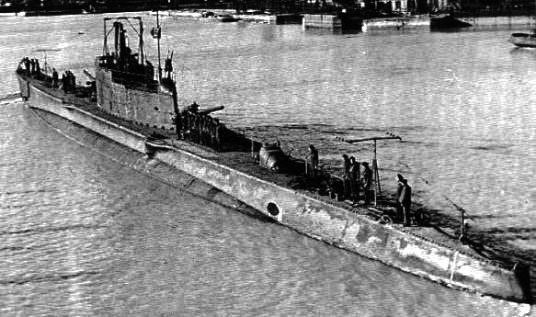
Calvi was laid down on 07.20.1932, Launched on 31.03.1935 and completed, commissioned on 10.16.1935. She was in the II Submarine Squadron in La Spezia later joined by her twins Finzi and Tazzoli as well as Ettore Fieramosca. In 1936 she cruised to Tripoli. During the Spanish Civil war, she made a clandestine cruise under command of LtCr Alberto Beretta and on 12 January 1937, shelled Valencia’s harbor installations. In 1938, she joined the XV Squadron (I Grupsom, La Spezia) and XII Squadron.
In 1940, she became the first Italian sub sent to the Atlantic under command of LtCr Giuseppe Caridi, leaving La Spezia on 3 July 1940, passed Gibraltar on the night 8-9 July and arrived at Madeira for her first was patrol. She entered Funchal harbour but could not spot any enemy ship. She later recrossed the Strait of Gibraltar on 1-2 to La Spezia. On 27 September 1940 Betasom base was established in Bordeaux after a Regia Marina-Kriegsmarine agreement sanctioned by their governments, and Calvi recrossed Gibraltar on 1 October while almost hitting the bottom down to 143 metres due to strong currents, but she remained unscathed. While proceeding to her destination, she spotted a large convoy, reported by Glauco off Cape Finisterre, Bay of Biscaye. She cruise ten days but spotted no target and entered Bordeaux on 23 October.
On 3 December 1940 she left Bordeaux for a station off Ireland. On 20 December she sank the armed steamer Carlton (5162 GRT) while protecting convoy OB 260, Calvi was caught surfaced, machine-gunned, but dove and launched a torpedo. On 26 December, she sank (unconfirmed) a 10,000 GRT freighter (explosion heard).
In April 1941 she performed several sighting but was not in position of attack and was back on 13 May. On 7 December 1941 under Lt.Cr. Emilio Olivieri to rescued survivors of the German Phyton with Tazzoli and some UBoats.
On 7 March 1942 she managed to sink three tankers and two cargo ships (29,000 gross tonnage) but failed to sink Huntingdon (10,946 GRT) but on 29 March sank the Tredinnick (4,589 GRT). On March 31 she sighted the US tanker T. C. McCobb (7452 GRT), surfaced and opened fire, but she had stopped due to rough seas and resumed, tracking the ship, at 22.52 from 6,800 m. With ten shells, she broke her engines. The tanker lowered four lifeboats and at 11.33pm she sank her for good with 6 torpedoes. This was the first US ship sunk by Italians vessels. On 8-9 April Calvi spotted and shadowed the tanker Eugene V. R. Thayer (7138 GRT) off the Gulf of Patos and sank her after a long chase with some of her remaining torpedoes and more than 120 shells. On 11 April she shelled and torpedoed the Norwegian motor vessel Balkis (2261 GRT) off Buenos Aires. It was Brazilian in waters, one cause to declare war on the Axis. On 12 April she sank the tanker Ben Brush (7691 GRT).
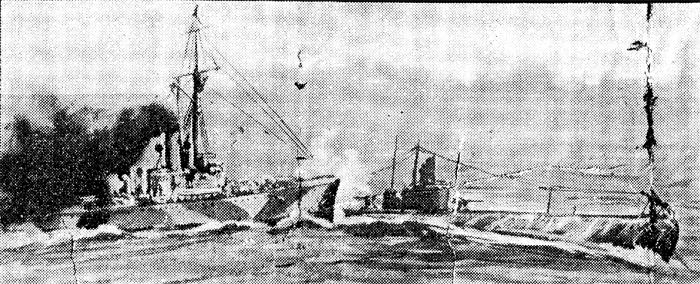
On 2 July, she left Bordeaux for her last mission under LtCd Primo Longobardo. On 14 July she tracked the convoy SL. 115 from Sierra Leone to UK, with four escort units. She was detected by radar and HMS Lulworth (A Banff class sloop) ran to the position, spotted her surfaced by night and opened fire. She submerged to 90 metres and two depth charges runs caused serious damage. It is believed her pressure hull ruptured, and she started to sink under 200 m straight. Longobardo ordered to surface and managed to do it, the crews immediately running to the guns. She was illuminated by Lulworth’s searchlights, and she opened fire, decimated crewmen of the aft gun. Herself, managed to turn and launch two torpedoes from her stern tubes, but she dodged them and approached at full speed for a ramming. She managed to hit her aft, destroying the left propeller. Immobilized, without gun crews and in flames, XO Villa and second chief Marchinist still unharmed managed to man the bow gun, until commander Longobardo ordered to scuttle her, but was killed with the navigation officer Lt. Guido Bozzi by machine gun fire. Lt. Gennaro Maffettone, trying to fire the stern gun also died. Eventually, chief engineer Aristide Russo opened the sea intake valves, and she started to fill while evacuated by the remaining crew.
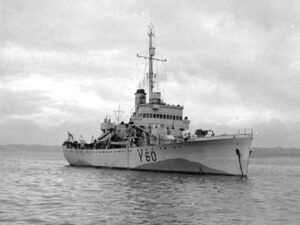 The sloop stopped firing and sent a lifeboat with a boarding party led by Lt. Frederick W. North. They climbed aboard, entered the boat and arrested Captain Russo, preventing the scuttling. Then Pietro Rini opened a torpedo tube. Lt. Vittorio Villa in the meantime went into the radio room and took the lead box with precious cryptographic codes, climbed back up and threw himself into the sea. This 15 July Calvi sank to the bottom, still with more than half of the crew and the boarding party, inc. Lt. North. 35 were rescued and captured by HMS Bideford.
The sloop stopped firing and sent a lifeboat with a boarding party led by Lt. Frederick W. North. They climbed aboard, entered the boat and arrested Captain Russo, preventing the scuttling. Then Pietro Rini opened a torpedo tube. Lt. Vittorio Villa in the meantime went into the radio room and took the lead box with precious cryptographic codes, climbed back up and threw himself into the sea. This 15 July Calvi sank to the bottom, still with more than half of the crew and the boarding party, inc. Lt. North. 35 were rescued and captured by HMS Bideford.
The story of the Calvi appeared in several British newspapers on Monday 28 September 1942. Primo Longobardo and Gennaro Maffettone received the Medaglio d’Oro posthumously. GN Aristide Russo and 2nd Chief Pietro Rini the Silver Medal for Military Valor and other awards to survivors in 1948.
In her career she covered 46,170 miles, sank 6 confirmed merchant ships (50,549 GRT, other sources gives 34,193 GRT).
 Guiseppe Finzi
Guiseppe Finzi
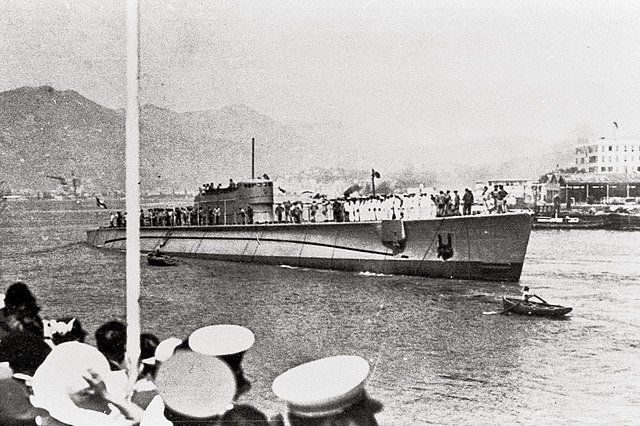
Finzi was laid down 1 August 1932, launched on 29 June 1935 and completed 8 January 1936. She was in the 2nd Submarine Squadron in La Spezia but later transferred to Taranto and used for training. She made a single mission during the Spanish Civil War from 15 August to 4 September 1937. On 20 August she launched two torpedoes against the destroyers Churruca and Lazaga, missed, and endured 3 hours of depth charging. Later she made three other attacks, missed two, but on 22 August torpedoed and missed the steamer Escolano (dodged). In June 1939 she sailed to El Ferrol and watched over traffic to and from the Strait of Gibraltar.
She left Cagliari on 5 June 1940, passed Gibraltar on 13 June and escape an attack by HMS Watchman near Punta Almina. She was posted in the Canary Islands, then Madeira and passed back the strait for home on 6 July.
On 7 September she departed again, attacked on 12-13 by a destroyer and reached Bordeaux and the Betasom base on the 29th. 24 October, first patrol, missed a merchantman, and on 18-27 November reported three convoys but could not approach (rough seas, low speed) back on 4 December.
10 March-17 April 1941 saw her off Porto, west Canaries and Cape Verde. On 10 August she searched for a convoy. On 4 September she had fuel leaks and on 6-24 December joined Calvi and Tazzoli to transport survivors of the auxiliary cruiser Atlantis and tanker Python.
On 6 February 1942 she was east of the Bahamas, Strait of Florida but had engine failures, missing two attacks. Her periscopes and rudders broke down. On 6 March 1942 she sank the tanker Melpomene (7001 GRT) and next night the steamer Skane (4528 GRT).
She met with Francesco Morosini on March 13, refuelled with 21 tons of diesel and sank the French vessel Charles Racine (9957 GRT) with six torpedoes and was back to Bx on March 31.
She had a refit in April-May, and departed on June 16 for an area between Cuba, Santo Domingo, Jamaica and the Pedro Bank. On July 9 she was in the Caribbean Sea and between 12 and 20 July sighted or detected by hydrophone several vessels but could not attack. On the 23rd she refuelled Francesco Morosini and Reginaldo Giuliani and missed a passenger ship. She was back on 18 August.
On 26 November she was sent to Capo San Rocco but had issues and was forced to come back on 10 December. On 11 February 1943 under LtCr Mario Rossetto she left for the Indian Ocean to refuel the Leonardo Da Vinci. On 18 March she badly damaged Lulworth Hill (7628 GRT), later finished off by Da Vinci. On 19-20 March she refueled Da Vinci and while back sank on 28 March the Greek steamer Granicos (3689 GRT) off Freetown and the British steamer Celtic Star (5575 GRT) a day later.
She was back on 18 April but, while underway in the Gironde estuary, she triggered a magnetic mine laid by the RAF previously. Damage was light, but at that stage it was decided to convert her as a transport sub for the Far East, completed in July 1943. But the Germans did not plane her to depart. At the armistice in September she was still in Bordeaux, took on board the base commander, c.v. Enzo Grossi while the crew voted to continue fighting on the German side. Disembarked on 14 October, most joined later the Italian Social Republic. In the Kriegsmarine she became “Mercator I” and then UIT.21 but, her first transport mission was abandoned due to her poor condition and, instead she was decommissioned in April 1944, blown up on 20 August to prevent recapture at Le Verdon-sur-Mer by the advancing Allied forces.
 Enrico Tazzoli
Enrico Tazzoli
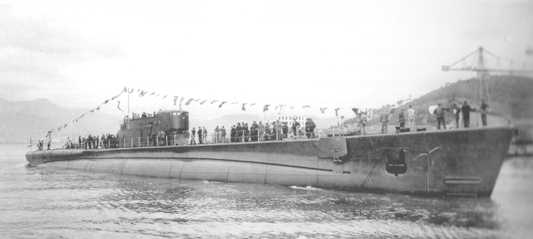
The most successful sub in class, was laid down 16 September 1932, launched on 13 October 1935 and only entered into service 18 April 1936 after design modifications to carry mines. In the Spanish Civil War she saw three unsuccessful missions from late 1936 to early 1937, missing a destroyer (Lazaga or Almirante Valdés) and was damaged by depth charges. She had a single mission in the Mediterranean and was assigned to the Atlantic, leaving for Bordeaux on August 1940, postponed due to breakdowns. She sailed on 2 October 1940 from La Spezia under LtCr Vittore Raccanelli, 7 October via Gibraltar under 124 m and on 11 October sighted a convoy but was unable to attack (bad weather). Furthermore, she was at Betasom on 24 October after claiming the Yugoslavian steamer Orao (5135 GRT) off Cape St. Vincent on 12 October. While proceeding to the mouth of the Gironde she was also shelled and machine-gunned by a British ship, and submerged.
For her second Atlantic patrol from December 1940 to January 1941 she damaged the steamship Everleight, sank off the Scottish coast on 27 December 1940 the steamship Ardhaban (4980 GRT). She was later back to base.
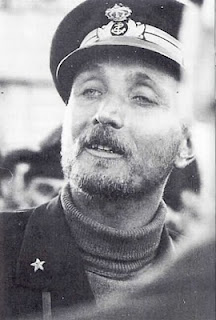 From 5 April 1941 she had a new commander (and top ace) Lt Cr Carlo Fecia di Cossato, with Lieutenant Gianfranco Gazzana-Priaroggia as XO, latter himself a great commander on Archimede and Leonardo Da Vinci. Tazzoli under Fecia di Cossato achieved a record 18 kills, Da Vinci under Gazzana-Priaroggia, the tonnage record at 120,243 GRT. For her 3rd patrol of 46 days, she started off Lisbon, proceeded to the Equator and on 15 April 1941 claimed the steamer Aurillac (4733 GRT). On 7 May she sank the Norwegian Fernlane (4310 GRT) and on the 9th the Norwegian tanker Alfred Olsen (8817 GRT) but while back in the mouth of the Gironde, she was air attacked, six bombs shook her but she survived. While surfaced, she shot down a Bristol Blenheim on 23 May 1941.
From 5 April 1941 she had a new commander (and top ace) Lt Cr Carlo Fecia di Cossato, with Lieutenant Gianfranco Gazzana-Priaroggia as XO, latter himself a great commander on Archimede and Leonardo Da Vinci. Tazzoli under Fecia di Cossato achieved a record 18 kills, Da Vinci under Gazzana-Priaroggia, the tonnage record at 120,243 GRT. For her 3rd patrol of 46 days, she started off Lisbon, proceeded to the Equator and on 15 April 1941 claimed the steamer Aurillac (4733 GRT). On 7 May she sank the Norwegian Fernlane (4310 GRT) and on the 9th the Norwegian tanker Alfred Olsen (8817 GRT) but while back in the mouth of the Gironde, she was air attacked, six bombs shook her but she survived. While surfaced, she shot down a Bristol Blenheim on 23 May 1941.
Her 4th patrol coast off Africa, she sank the steamship Sangara (5449 GRT) already damaged by U69. On 19 August she sank the Norwegian tanker Sildra (7313 GRT) off Freetown. By December 1941 leaving Bordeaux with 3 U-Boots she rescued over 400 from Atlantis and Python and Commander Di Cossato was given by Admiral Dönitz the Iron Cross 1st Class. On 11 February 1942 in her 5th patrol she sank the Dutch steamer Astrea (1406 GRT) on 6 March 1942, Norwegian Tonsbergfjord (3156 GRT), Uruguayan steamer Montevideo (5785 GRT) and on 11 March the Panamanian steamer Cygnet (3628 GRT) and on the 13th the English Daytonian (6434 GRT), and on the 15th the tanker Athelqueen (8780 GRT). On 17 torpedoes launched, 13 hit making Cossato the “top italian marksman”.
On 24 June 1942 for her 6th patrol she sailed to the Caribbean, sank the Dutch steamer Castor (1830 GRT) on 1 August 1942, Norwegian tanker Havsten (6160 GRT), 5 days later and as back after 71 days, 10,000 miles crossed.
On 14 November 1942 she left for her 7th patrol, refueled from Leonardo Da Vinci. She managed to shot down a Short Stirling attacking her on the 12th December, and also sank the British steamer Empire Hawk (5032 GRT) and Dutch Ombilin (5658 GRT). On the 21st she sank the British steamer Queen City (4814 GRT) and on Xmas day, the the US Dona Aurora (5011 GRT), back to base on 26 January 1943.
It was decided in between to convert her like Barbarigo, Cagni, Finzi, Giuliani, Torelli and Comandante Cappellini as a “special transport” to the Far East which was completed in April-May 1943. Carlo Fecia di Cossato later took command of the 3rd Torpedo Squadron on Aliseo (Ciclone-class), earning more medals.
Tazzoli departed for her first transport mission on 16 May 1943 under command of CC Giuseppe Caito with 165 tons of materials on board and technicians to prepare an Italian submarine base in the Far East. However, she was never hard from again. Now it is assumed she was sunk between 17 and 24 May 1943 by a mine laid by RAF aircraft. An air attack was not confirmed in RAF archives. U.S.S. Mackenzie on May 16 in the Bay of Biscay launched depth charges but could not confirm a kill.
Read More/Src
Books
Conway’s all the world’s fighting ships 1922-46
Campbell, John (1985). Naval Weapons of World War Two. Annapolis, Maryland: Naval Institute Press.
Fontenoy, Paul E. (2007). Submarines: An Illustrated History of Their Impact. Santa Barbara, California: ABC-CLIO.
Fraccaroli, Aldo (1968). Italian Warships of World War II. Shepperton, UK: Ian Allan.
Kafka, Roger; Pepperburg, Roy L. (1946). Warships of the World. Cornell Maritime Press.
Giorgio Giorgerini, Uomini sul fondo. Storia del sommergibilismo italiano dalle origini a oggi, Segrate, Arnoldo Mondadori Editore, 2002
Alessandro Turrini e Ottorino O. Miozzi, Sommergibili italiani, Roma, Ufficio Storico della Marina Militare, 1999.
Links
https://web.archive.org/web/20110917030516/http://www.xmasgrupsom.com/Sommergibili/Calvi/Calvi.html
http://www.trentoincina.it/mostrapost.php?id=288
http://www.trentoincina.it/dbsomm2.php?short_name=Finzi
http://www.trentoincina.it/dbsomm2.php?short_name=Tazzoli
http://www.trentoincina.it/dbsomm2.php?short_name=Calvi
http://www.navypedia.org/ships/italy/it_ss_calvi.htm
https://www.betasom.it/forum/index.php?/topic/31947-classe-calvi-1932/
https://web.archive.org/web/20120923031401/http://www.xmasgrupsom.com/Sommergibili/FINZI.HTM
https://www.betasom.it/forum/index.php?/topic/24477-i-successi-dei-sommergibili-italiani-iiww/
https://it.wikipedia.org/wiki/Classe_Calvi
Model Kits
https://combrig-models.com/index.php/1350/75-italian-navy-350/915-tazzoli350
http://www.modelshipgallery.com/gallery/ss/it/EnricoTazzoli-350-c/index.htm

 Latest Facebook Entry -
Latest Facebook Entry -  X(Tweeter) Naval Encyclopedia's deck archive
X(Tweeter) Naval Encyclopedia's deck archive Instagram (@navalencyc)
Instagram (@navalencyc)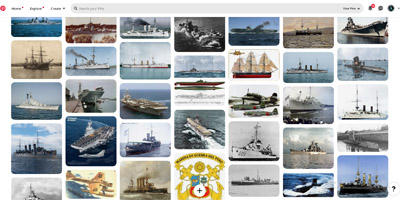

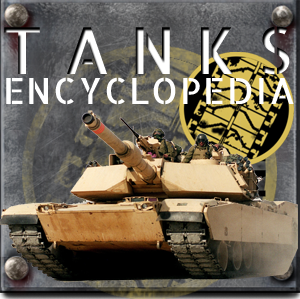
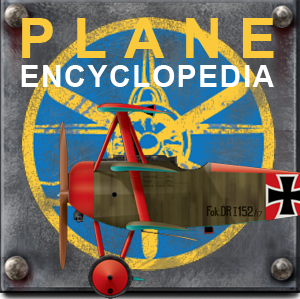
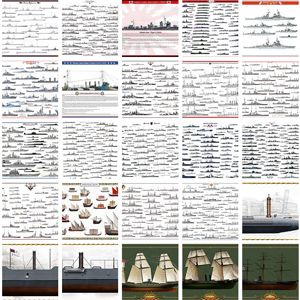
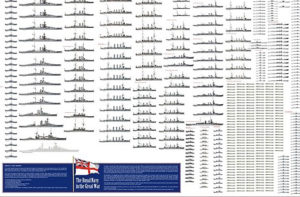
 French Navy
French Navy Royal Navy
Royal Navy Russian Navy
Russian Navy Armada Espanola
Armada Espanola Austrian Navy
Austrian Navy K.u.K. Kriegsmarine
K.u.K. Kriegsmarine Dansk Marine
Dansk Marine Nautiko Hellenon
Nautiko Hellenon Koninklije Marine 1870
Koninklije Marine 1870 Marinha do Brasil
Marinha do Brasil Osmanlı Donanması
Osmanlı Donanması Marina Do Peru
Marina Do Peru Marinha do Portugal
Marinha do Portugal Regia Marina 1870
Regia Marina 1870 Nihhon Kaigun 1870
Nihhon Kaigun 1870 Preußische Marine 1870
Preußische Marine 1870 Russkiy Flot 1870
Russkiy Flot 1870 Svenska marinen
Svenska marinen Søværnet
Søværnet Union Navy
Union Navy Confederate Navy
Confederate Navy Armada de Argentina
Armada de Argentina Imperial Chinese Navy
Imperial Chinese Navy Marinha do Portugal
Marinha do Portugal Mexico
Mexico Kaiserliche Marine
Kaiserliche Marine 1898 US Navy
1898 US Navy Sovietskiy Flot
Sovietskiy Flot Royal Canadian Navy
Royal Canadian Navy Royal Australian Navy
Royal Australian Navy RNZN Fleet
RNZN Fleet Chinese Navy 1937
Chinese Navy 1937 Kriegsmarine
Kriegsmarine Chilean Navy
Chilean Navy Danish Navy
Danish Navy Finnish Navy
Finnish Navy Hellenic Navy
Hellenic Navy Polish Navy
Polish Navy Romanian Navy
Romanian Navy Turkish Navy
Turkish Navy Royal Yugoslav Navy
Royal Yugoslav Navy Royal Thai Navy
Royal Thai Navy Minor Navies
Minor Navies Albania
Albania Austria
Austria Belgium
Belgium Columbia
Columbia Costa Rica
Costa Rica Cuba
Cuba Czechoslovakia
Czechoslovakia Dominican Republic
Dominican Republic Haiti
Haiti Hungary
Hungary Honduras
Honduras Estonia
Estonia Iceland
Iceland Eire
Eire Equador
Equador Iran
Iran Iraq
Iraq Latvia
Latvia Liberia
Liberia Lithuania
Lithuania Mandchukuo
Mandchukuo Morocco
Morocco Nicaragua
Nicaragua Persia
Persia San Salvador
San Salvador Sarawak
Sarawak Uruguay
Uruguay Venezuela
Venezuela Zanzibar
Zanzibar Warsaw Pact Navies
Warsaw Pact Navies Bulgaria
Bulgaria Hungary
Hungary

 Bundesmarine
Bundesmarine Dutch Navy
Dutch Navy Hellenic Navy
Hellenic Navy Marina Militare
Marina Militare Yugoslav Navy
Yugoslav Navy Chinese Navy
Chinese Navy Indian Navy
Indian Navy Indonesian Navy
Indonesian Navy JMSDF
JMSDF North Korean Navy
North Korean Navy Pakistani Navy
Pakistani Navy Philippines Navy
Philippines Navy ROKN
ROKN Rep. of Singapore Navy
Rep. of Singapore Navy Taiwanese Navy
Taiwanese Navy IDF Navy
IDF Navy Saudi Navy
Saudi Navy Royal New Zealand Navy
Royal New Zealand Navy Egyptian Navy
Egyptian Navy South African Navy
South African Navy






























 Ukrainian Navy
Ukrainian Navy dbodesign
dbodesign